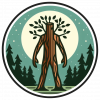WILDLABS has been observing World Wildlife Day since our inception in 2015, and we were honored to be an official partner for this year’s celebration at the United Nations, where the global conservation community gathered under the theme “Connecting People and Planet: Exploring Digital Innovation in Wildlife Conservation.” As the global hub for conservation technology worldwide, we were thrilled to represent the conservation tech community on the world stage.
Our Executive Manager Stephanie O’Donnell kicked off the event with a talk that explored what conservation tech really is—an interconnected web of tech innovators, scalers, adopters, and enablers—and how WILDLABS works to connect these different areas of the sector to create more efficient and accessible solutions. Watch her talk below, and catch up the full session on UNTV here.
Scaling innovation in Conservation
An abridged version of this talk was given by Stephanie O'Donnell at the UN celebration of World Wildlife Day, 2024.
Thank you, Ivonne. It is wonderful to be here. I am the Executive Manager WILDLABS, a global community for conservation technology. We launched in 2015 as a partnership between leading conservation NGOs to catalyse collaboration to accelerate the development and scaling of technology solutions for conservation impact.
Since its launch, WILDLABS has grown to a vibrant community of over 8,500 members around the world who use our online platform, events, research and funding programmes to discover information and best practice, identify shared challenges, find collaborators, and access resources. Our community is the go-to place for all things conservation technology.

What is Conservation Technology?
In this role I work with conservationists every day, and I hear about the challenges they face accessing and using technology. I’m going to talk about the innovation needs we hear coming from our community, but before I get to there, I want to start with the question: what is conservation technology?
Every year for World Wildlife Day, we ask our community to take a photo of how they are using tech in the field or lab, share it on social media and tell us about all the ways technology is critical in their work. Over the past 8 years we have had hundreds of photos and videos shared from across the planet. When I ask, ‘what is conservation technology?’, I imagine some of the technologies on display here are what immediately jump to mind: drones, biologgers, camera traps, bioacoustics devices.

But these hardware devices are just one part of how technology is being used in conservation. Rather than thinking about technology, it may be helpful to think about data. We use technology to collect, manage and analyse data, so that we can make better decisions. When using tech in conservation, rather than starting with what technology should I use?, we consider these questions: What data do you need, how will you collect it, who needs to see it, where are you going to store it, and how will you use it to inform your decision making?

What our Innovation Challenges?
Our theme for this year’s World Wildlife Day is ‘Exploring digital innovation in wildlife conservation’. So, what is innovation in conservation technology? Through work like our State of Conservation Technology research, we help our community identify shared innovation priorities. When asked, our community talks about needing innovation in all three of these areas.
 There are hardware and engineering challenges around designing smaller sensors, lengthening battery life, lowering cost and integrating different sensors so we get more complete pictures of environments or animal behaviour. We need improvements in software and data infrastructure, which includes improving user interfaces, so that it is easier to get data from sensors to where it needs to go and we are ensuring that people working in different areas and different technical skillsets are better able to access and work with data. And we need (and are seeing) innovations around traditional quantitative ecology (statistics) and the growing application of AI in conservation.
There are hardware and engineering challenges around designing smaller sensors, lengthening battery life, lowering cost and integrating different sensors so we get more complete pictures of environments or animal behaviour. We need improvements in software and data infrastructure, which includes improving user interfaces, so that it is easier to get data from sensors to where it needs to go and we are ensuring that people working in different areas and different technical skillsets are better able to access and work with data. And we need (and are seeing) innovations around traditional quantitative ecology (statistics) and the growing application of AI in conservation.
How do we scale Innovation?
But when we have these conversations with our members about how they need to tech improve, while they talk about the specific technical challenges, they very quickly shift to big picture, systemic challenges facing our sector.
They ask:
How do we work together to attempt ambitious goals like the large-scale tracking of many animals? How do we build accessible, user friendly, interoperable tools? How do we how do we build local technical capacity? What standards do we need, and how do we achieve global data sharing and archiving?
These are big challenges that are beyond the scope of a single project or organisation, and this is truly where the investment and innovation is needed.
When we think innovation, we think ‘new’, ‘better’, ‘cutting edge’ and of activities like hackathons or grand challenges.
But if you can take one thing away from my talk it is this: These specific technology innovations are just ONE part of what we need to unlock the full potential of technology to address the challenges facing our planet. Innovators are just one part of a complex system.


This is how I envisage our community: we have adopters who are conservationists working directly on conservation challenges, they need access to better tools and training. The innovators respond to the challenges adopters are facing and come up with new tech innovations to answer them. But critically, we need the people and organisations working in the scaling and usability space to take these innovations and transform them into accessible and maintained tools that the adopters can trust and easily use. And finally, these enabling partners are critical for ensuring the resources are available and directed to all parts of this system.
This is what this looks like in practice.

With WILDLABS, our goal is to help all parts of this system be able to find each other, to be able to talk the same language and to have the resources available to effectively collaborate - at a global level and at a local level.
This map is also one of my greatest sources of optimism: this would have been a vastly emptier diagram a few years ago. The organisation and people sitting in the adopter space would have been stretching to cover all parts of this map. But our sector is rapidly changing, and we are welcoming so many new people and partners from other sectors into this space. The scaling and usability area is where we are seeing the biggest growth in recent years, and this in part a reflection of a growing awareness in the enablers that tech projects require significant ongoing investment to be maintained and accessible.
And while all you can see here are logos, behind each one are real people: engineers, biologists, designers, communicators, developers – people coming from a huge array of backgrounds. And through technology, each person has found an important role to play in conservation. We cannot meet the challenges ahead of us alone, we must work with other sectors, and technology is a powerful pathway to build bridges to do this.
And so, it my pleasure to introduce you to these people, and share their work showcased in their entries to the World Wildlife Day #Tech4wildlife photo challenge. Please enjoy.
11 May 2024 9:05pm
This was so damn cool to listen to @StephODonnell ! When it comes to data: accessibility, collaboration and interoperability. That underlying challenge statement made something click for me.






Sebastian Wallace